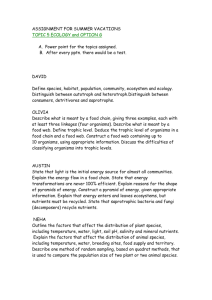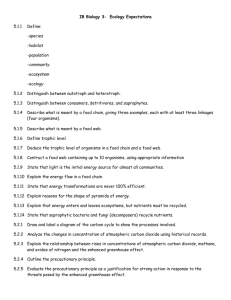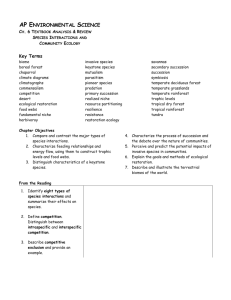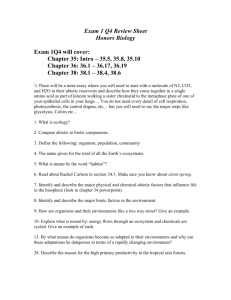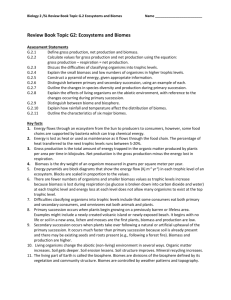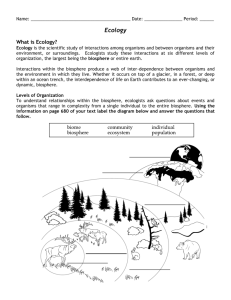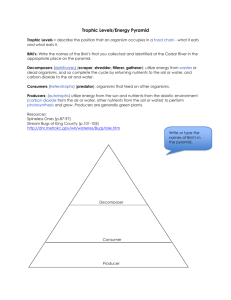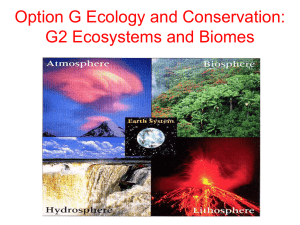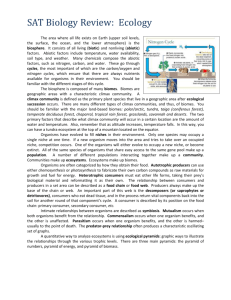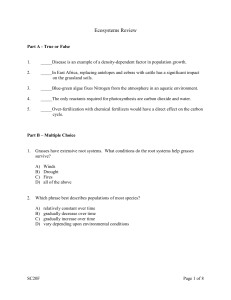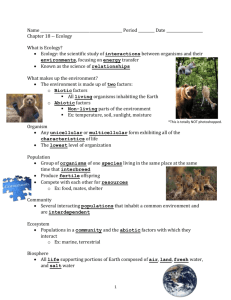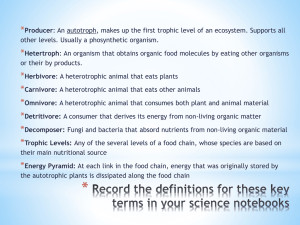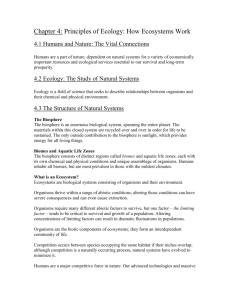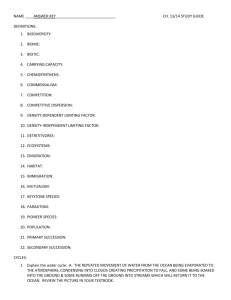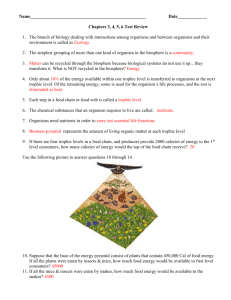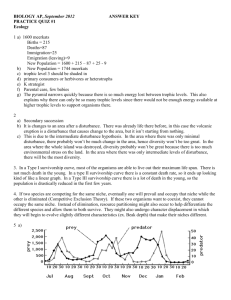assignment for summer vacations
advertisement
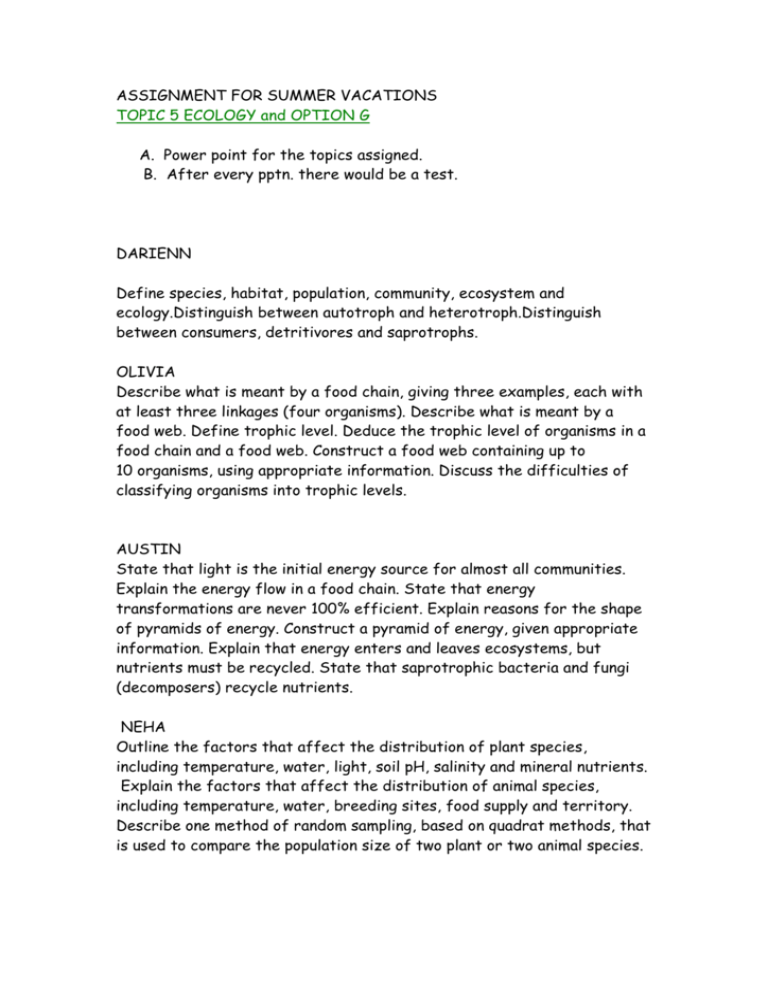
ASSIGNMENT FOR SUMMER VACATIONS TOPIC 5 ECOLOGY and OPTION G A. Power point for the topics assigned. B. After every pptn. there would be a test. DARIENN Define species, habitat, population, community, ecosystem and ecology.Distinguish between autotroph and heterotroph.Distinguish between consumers, detritivores and saprotrophs. OLIVIA Describe what is meant by a food chain, giving three examples, each with at least three linkages (four organisms). Describe what is meant by a food web. Define trophic level. Deduce the trophic level of organisms in a food chain and a food web. Construct a food web containing up to 10 organisms, using appropriate information. Discuss the difficulties of classifying organisms into trophic levels. AUSTIN State that light is the initial energy source for almost all communities. Explain the energy flow in a food chain. State that energy transformations are never 100% efficient. Explain reasons for the shape of pyramids of energy. Construct a pyramid of energy, given appropriate information. Explain that energy enters and leaves ecosystems, but nutrients must be recycled. State that saprotrophic bacteria and fungi (decomposers) recycle nutrients. NEHA Outline the factors that affect the distribution of plant species, including temperature, water, light, soil pH, salinity and mineral nutrients. Explain the factors that affect the distribution of animal species, including temperature, water, breeding sites, food supply and territory. Describe one method of random sampling, based on quadrat methods, that is used to compare the population size of two plant or two animal species. SONDRE Outline the use of a transect to correlate the distribution of plant or animal species with an abiotic variable. Explain what is meant by the niche concept, including an organism’s spatial habitat, its feeding activities and its interactions with other species. Outline the following interactions between species, giving two examples of each: competition, herbivory, predation, parasitism and mutualism. ABBEY Explain the principle of competitive exclusion. Distinguish between fundamental and realized niches. Define biomass. Describe one method for the measurement of biomass of different trophic levels in an ecosystem. Explain the small biomass and low numbers of organisms in higher trophic levels. STEPHANIE Draw and label a diagram of the carbon cycle to show the processes involved. Analyse the changes in concentration of atmospheric carbon dioxide using historical records. Explain the relationship between rises in concentrations of atmospheric carbon dioxide, methane and oxides of nitrogen and the enhanced greenhouse effect. Outline the precautionary principle. Evaluate the precautionary principle as a justification for strong action in response to the threats posed by the enhanced greenhouse effect. Outline the consequences of a global temperature rise on arctic ecosystems. AILEEN Outline how population size is affected by natality, immigration, mortality and emigration. Draw and label a graph showing a sigmoid (S-shaped) population growth curve. Explain the reasons for the exponential growth phase, the plateau phase and the transitional phase between these two phases. List three factors that set limits to population increase. AIDEN Distinguish between biome and biosphere. Explain how rainfall and temperature affect the distribution of biomes. Outline the characteristics of six major biomes. Examples of major biomes could include:( HINT-TABLE) desert grassland shrubland (chaparral, matorral, maquis and garigue, dry heathlands, fynbos) temperate deciduous forest tropical rainforest tundra. The description should be limited to temperature, moisture and characteristics of vegetation. TZU Distinguish between primary and secondary succession, using an example of each. Outline the changes in species diversity and production during primary succession. Explain the effects of living organisms on the abiotic environment, with reference to the changes occurring during primary succession. (Include soil development, accumulation of minerals and reduced erosion) SHALEENA Explain the cause and consequences of biomagnification, using a named example. Outline the effects of ultraviolet (UV) radiation on living tissues and biological productivity. Outline the effect of chlorofluorocarbons (CFCs) on the ozone layer. State that ozone in the stratosphere absorbs UV radiation.
